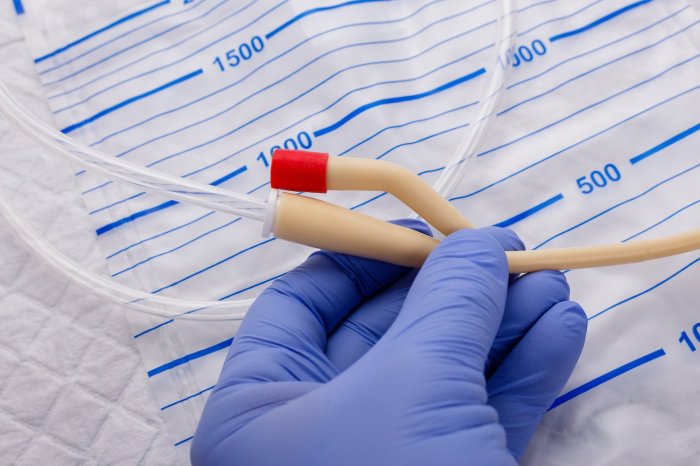Urinary catheterization is a common procedure performed in healthcare settings. A nurse is discussing indications for urinary catheterization, providing valuable insights into the circumstances that necessitate this intervention. This comprehensive guide explores the medical conditions, surgical procedures, diagnostic tests, neurological conditions, and other factors that warrant the use of urinary catheters, empowering nurses with the knowledge to make informed decisions and ensure optimal patient care.
Understanding the indications for urinary catheterization is crucial for nurses to effectively manage patient care. By recognizing the specific situations that call for catheterization, nurses can ensure timely intervention, prevent complications, and promote patient comfort and well-being.
Indications for Urinary Catheterization: A Nurse Is Discussing Indications For Urinary Catheterization

Urinary catheterization is a procedure that involves inserting a thin, flexible tube into the bladder to drain urine. It is commonly used in various medical situations, including urinary retention, surgical procedures, diagnostic tests, and neurological conditions.
Medical Conditions, A nurse is discussing indications for urinary catheterization
Urinary catheterization is indicated in patients with urinary retention, a condition in which the bladder is unable to empty completely. This can be caused by various underlying conditions, such as:
- Benign prostatic hyperplasia (BPH)
- Prostate cancer
- Urethral stricture
- Neurological disorders (e.g., spinal cord injury)
Assessment findings that support the need for catheterization in these patients include:
- Inability to urinate
- Distended bladder
- Overflow incontinence
- Post-void residual urine volume greater than 150 ml
Surgical Procedures
Urinary catheterization is commonly used during and after surgical procedures to:
- Prevent urinary retention and facilitate bladder drainage
- Monitor urine output
- Administer medications or fluids
- Irrigate the bladder
Surgical procedures that commonly require catheterization include:
- Prostate surgery
- Pelvic surgery
- Abdominal surgery
Diagnostic Tests and Procedures
Urinary catheterization may be necessary in certain diagnostic tests and procedures to:
- Obtain a sterile urine sample
- Measure post-void residual urine volume
- Perform cystoscopy or ureteroscopy
Examples of diagnostic tests that may require catheterization include:
- Urinalysis
- Cystourethroscopy
- Urodynamic studies
Neurological Conditions
Urinary catheterization is often indicated in patients with neurological conditions that affect bladder function, such as:
- Spinal cord injury
- Multiple sclerosis
- Parkinson’s disease
Catheterization in these patients can help manage incontinence and prevent complications, such as urinary tract infections and pressure ulcers.Assessment findings that suggest the need for catheterization in patients with neurological conditions include:
- Neurogenic bladder
- Urinary incontinence
- Difficulty with self-catheterization
Quick FAQs
What are the most common indications for urinary catheterization?
Urinary retention, surgical procedures, diagnostic tests, neurological conditions, and other situations where urine output needs to be monitored or controlled.
How do I know if my patient needs a urinary catheter?
Assessment findings that support the need for catheterization include difficulty urinating, urinary retention, incontinence, and certain medical conditions or surgical procedures.
What are the different types of urinary catheters?
There are various types of urinary catheters, including indwelling catheters, intermittent catheters, and external catheters, each with specific indications and applications.


